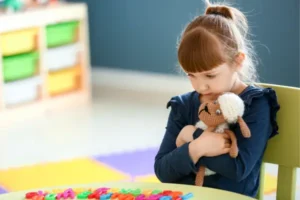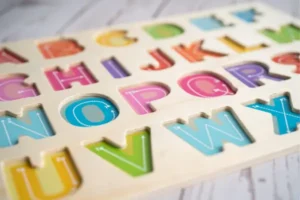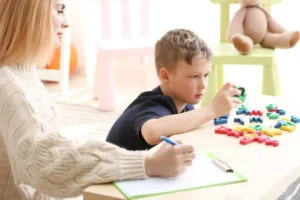Contextualizing the Topic
Language development is a key area of growth for children with autism. Effective communication can be a challenge, but it is essential for building relationships, expressing needs, and succeeding in daily activities. Educational toys play a crucial role in helping children with autism develop language skills, offering a fun and engaging way to enhance their communication abilities.
Purpose of the Article
In this article, we will explore some of the best language-learning toys designed specifically for children with autism. These toys can help foster speech, improve social interaction, and support cognitive development, all in a child-friendly, interactive way.
The Importance of Choosing the Right Toys
Every child with autism is unique, with varying needs, strengths, and challenges. Selecting the right toys for your child is crucial, as it ensures that they are receiving the right type of stimulation to support their language development. By choosing toys tailored to your child’s needs, you can create an environment that promotes growth, communication, and learning at their own pace.
Why Are Learning Toys Important for Children with Autism?
Sensory Stimulation and Language
Sensory toys are particularly beneficial for children with autism because they engage multiple senses—sight, sound, touch, and even smell. This multi-sensory interaction can enhance language development by helping children connect words with experiences, objects, and actions in the world around them. For example, toys with textures or sounds can stimulate curiosity, encourage exploration, and facilitate communication.
Encouraging Communication Skills
Learning toys can help children with autism develop both verbal and non-verbal communication skills. Toys that encourage vocalization, repetition, or imitating sounds promote speech. Meanwhile, toys that involve pictures, symbols, or gestures can help strengthen non-verbal communication, making it easier for children to express their thoughts and emotions in ways that feel comfortable to them.
Cognitive and Social Skills Development
Many educational toys are designed to promote cognitive skills such as problem-solving, cause and effect, and memory. These skills are foundational for language development. Additionally, toys that require social interaction, such as turn-taking or sharing, help build social skills and encourage meaningful connections with others, further enhancing a child’s communication abilities.
Key Features to Look for in Language-Learning Toys for Children with Autism
Sensory-Friendly Options
When choosing toys for children with autism, it’s important to look for sensory-friendly options that engage the child’s senses in a gentle and supportive way. Toys with tactile textures, soothing sounds, or visual elements like lights and colors can help stimulate sensory development and promote language learning by connecting words to sensory experiences.
Simple and Clear Instructions
Toys with clear, simple instructions are ideal, as they help children understand how to engage with them and encourage repetitive learning. Interactive toys with easy-to-follow steps or visual cues make it easier for children to process information and actively participate in language-building activities.
Adjustability
As every child develops at their own pace, it’s helpful to select toys that can be adjusted to meet their specific needs. Look for toys with varying difficulty levels, adaptable settings, or customizable features that allow for gradual progress, making them suitable for different developmental stages.
Non-Overwhelming Design
For children with autism, it’s important to avoid overstimulating toys that could lead to frustration or sensory overload. Choose toys that have a calming, uncluttered design, with manageable sensory input. A toy that’s too bright, noisy, or complex may cause stress, so simplicity and balance are key.
Top 10 Best Language-Learning Toys for Children with Autism
1. LeapFrog LeapStart Learning System
Description: An interactive learning toy with a stylus that helps children engage with books and activities.
Features: Includes a variety of books and activities covering subjects like letters, numbers, and emotions.
How It Helps: The tactile engagement and audio feedback help children associate words with actions, improving both language and cognitive skills.
2. VTech Touch and Learn Activity Desk
Description: A multi-functional activity desk with interactive pages that teach letters, numbers, shapes, and animals.
Features: Features a light-up screen, buttons for various sounds, and an easy-to-use interface.
How It Helps: Promotes language development by helping children learn words and sounds through visual and auditory interaction.
3. Fisher-Price Laugh & Learn Smart Stages Chair
Description: A child-sized chair that features music, phrases, and activities related to everyday situations.
Features: Adjustable learning levels based on the child’s age, with songs and phrases that teach new words.
How It Helps: Encourages verbal communication and cognitive skills while providing a comfortable environment for children to learn.
4. Tiggly Words
Description: A set of physical letter toys that work with a tablet app to teach letter recognition and word formation.
Features: Interactive app that uses the Tiggly toy set to form words on the screen.
How It Helps: Supports language development by encouraging letter and word recognition through visual and tactile play.
5. Melissa & Doug Wooden Alphabet Blocks
Description: A classic set of colorful wooden blocks with letters, numbers, and pictures.
Features: Blocks feature both uppercase and lowercase letters, numbers, and animal illustrations.
How It Helps: Builds foundational language skills by promoting letter recognition, word formation, and basic literacy.
6. Hape Rainbow Xylophone
Description: A colorful xylophone designed to encourage musical play while developing auditory and motor skills.
Features: Rainbow-colored keys, durable construction, and an age-appropriate design.
How It Helps: Encourages auditory discrimination and can help with speech development by associating sounds with colors and patterns.
7. Fisher-Price Say Please Tea Set
Description: A pretend-play tea set that promotes social interaction and language skills.
Features: Interactive tea set with fun phrases like “Would you like some tea?” and various role-playing scenarios.
How It Helps: Encourages verbal communication, social skills, and turn-taking in a fun, non-intimidating way.
8. Baby Einstein Take Along Tunes Musical Toy
Description: A portable musical toy with lights and melodies.
Features: Plays classical music, with large buttons that children can press to activate different tunes.
How It Helps: Enhances auditory skills and encourages language development by associating music with words and phrases.
9. Osmo – Genius Starter Kit for iPad
Description: An interactive system that combines physical play pieces with a tablet app to create engaging learning experiences.
Features: Includes a variety of games that teach letters, math, and creativity using hands-on play.
How It Helps: Promotes language development through interactive games that combine visual, auditory, and tactile stimuli.
10. Toys for Tots Communication Cards
Description: A set of visual communication cards designed for non-verbal children to express their needs and emotions.
Features: Includes a range of images and words to help children communicate basic needs and emotions.
How It Helps: Supports language development and communication for non-verbal children, fostering independence and self-expression.
How to Choose the Right Toy for Your Child
Assessing Your Child’s Needs
To choose the best toy, start by assessing your child’s individual needs. If your child responds well to touch, consider sensory toys with different textures. If they struggle with verbal communication, toys that encourage speech through sound or repetition may be more suitable. For children who benefit from visual cues, choose toys with bright colors, images, or screens that reinforce learning through visual stimuli.
Consulting with Therapists
Working with professionals, such as speech-language pathologists or occupational therapists, can provide valuable insights into your child’s specific needs. These experts can guide you in selecting toys that complement your child’s developmental stage and enhance their language and social skills. They may also recommend specific types of toys or activities that support communication and cognitive growth.
Trial and Error
Remember, every child is different. It may take some experimentation to discover which toys engage your child the most. Observe their reactions to different toys—do they show interest, remain calm, or become overstimulated? Trial and error can help you determine the right balance of sensory input, interactive elements, and learning opportunities that best suit your child’s preferences and developmental needs.
6. Benefits of Using Language-Learning Toys for Children with Autism
Improved Communication Skills
Language-learning toys are designed to enhance both verbal and non-verbal communication. Through repetitive play, children can practice speech, mimic sounds, and use gestures, helping them build stronger communication skills. Toys that offer visual or auditory cues can also reinforce word associations and promote language understanding.
Increased Social Interaction
These toys can encourage social skills development by facilitating shared play experiences. By engaging with caregivers, siblings, or peers, children practice important social behaviors such as turn-taking, sharing, and conversation. This social interaction not only enhances language development but also helps children build stronger relationships and social connections.
Boosted Confidence and Independence
Successfully using language-learning toys gives children a sense of accomplishment, which can boost their confidence and self-esteem. As they master new tasks or complete activities, children gain a greater sense of independence and feel empowered in their learning journey. This increased confidence supports overall emotional development and motivates them to continue exploring new skills.
Conclusion
Summary of Key Points
In this article, we’ve highlighted some of the best language-learning toys for children with autism, including toys that promote sensory engagement, communication, and social interaction. These toys can play a crucial role in enhancing language skills, improving confidence, and encouraging social connections.
Encouragement for Parents and Caregivers
Choosing the right toys can make a significant difference in your child’s development. By selecting toys that cater to their individual needs and interests, you can create an enriching environment that supports language growth and emotional well-being.
Final Thought
Remember, every child is unique, and progress may take time. Be patient, and don’t be afraid to experiment with different toys to see what works best for your child. With the right support and tools, you can help your child build essential language skills and boost their confidence on their learning journey.




